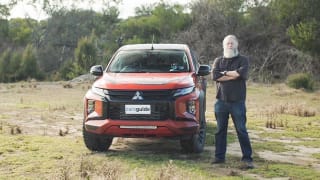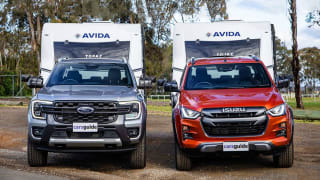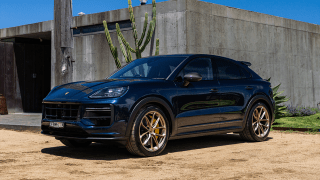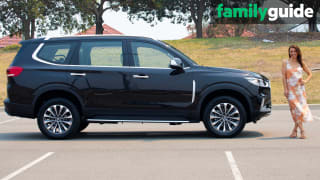Before we get into the meat of it, let’s talk price. This is now the most expensive HiLux you can buy, and yet it isn’t quite a full-fat GR in the same vein as a GR Corolla or GR Yaris.
To do so, it would need to come with a massive boost in power, but instead this HiLux goes in a different direction.
Positioned by the brand as a more hardcore off-road alternative to the previous top-spec Rogue, the HiLux GR Sport costs $73,990, before on-road costs.
You might note that this is significantly cheaper than what might appear to be its most natural rival, the Ranger Raptor ($87,990), but it’s not quite in the same performance territory.
Does this leave room above for a full-fat GR? Perhaps. Toyota said no such truck is in the works, though, so I wouldn’t hold your breath.

To disappoint further, the GR Sport doesn’t pack a different engine. Instead it persists with a re-tuned version of the existing 2.8-litre four-cylinder unit from the rest of the range.
We’ll cover the details on that later, but your additional money is instead mostly going towards modifications, visible and more subtle, to improve the HiLux’s performance, mainly when you venture off the tarmac.
The biggest changes are to the suspension. It gets the same wider track as the Rogue, but also a 15mm lift and larger KYB monotube shock absorbers.
There’s a set of off-road ready 17-inch alloy wheels, disc brakes all around, and a boost to axle articulation thanks to the removal of the rear sway bar.
Other upgrades extend to the underbody, including what Toyota calls ‘Dakar-inspired’ skid plates (consisting of 4.0mm thick pressed aluminium), heavy duty rock rails with side steps (made of 2.0mm thick steel), said to be able to hold the fully laden weight of the car, and the addition of rear (20mm thick steel) recovery points.

To facilitate its additional width, there are, of course, the hard-to-miss body modifications, including massive plastic over fenders, and a completely new face with a big open grille (good luck cleaning bugs out of your radiator) and trendy TOYOTA typeface across the top.
The extra width in the bumper also includes functional air vents to push air around the car and reduce drag.
The brand says these modifications are part of the GR Sport’s Dakar DNA allowing it to be “high and light” - and there's a local touch. The new look was developed in Melbourne.
Around the back there are less significant changes. Toyota says it has intentionally left the tray free of a sports bar or other modifications as it keeps the weight and price of the vehicle down, while understanding that most buyers will want to add their own modifications, anyway.

Regardless, the tow kit with wiring harness is standard, as is a GR Sport themed tub liner.
If you’re worried about a wait-list, as there has been for other popular Toyotas, the brand certainly isn’t, proclaiming it has the ability to build some 3500 units a year.
What don’t you get? Aside from some GR Sport seats (in a synthetic suede/leather combination) and a slightly tweaked wheel, there’s little extra going on inside, and while engine outputs have been boosted by about 10 per cent, it’s hardly a big turbo V6.
Raptor rival then, this isn’t, more in the vein of the Mitsubishi Triton Xtreme or Navara Pro-4X, as is reflected in its price.



.jpg)
.jpg)


.jpg)
.jpg)
.jpg)
.jpg)











